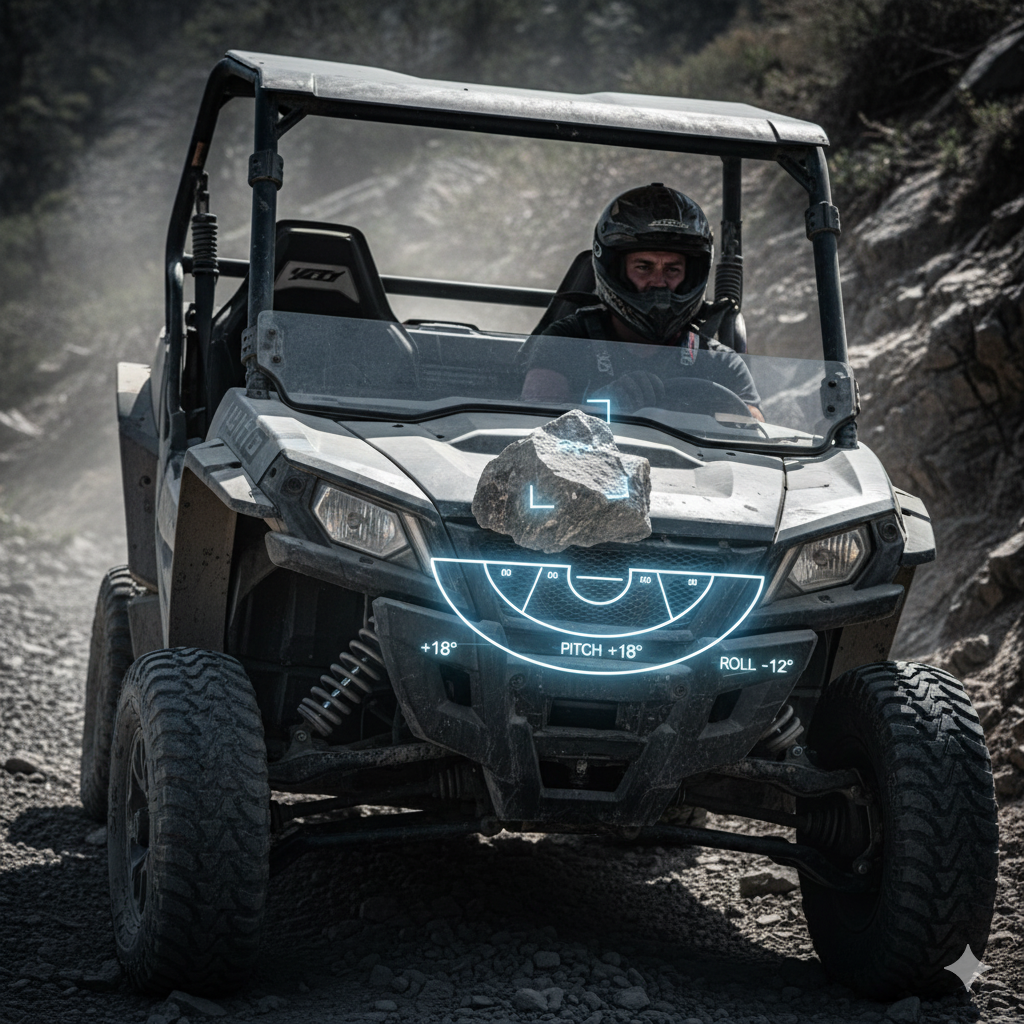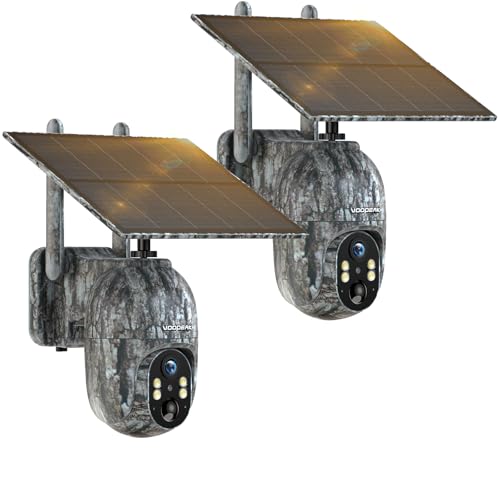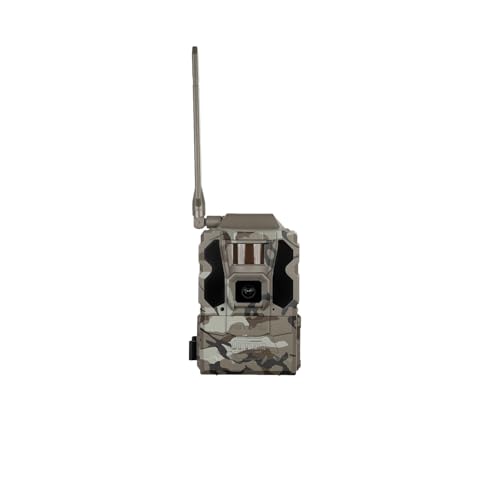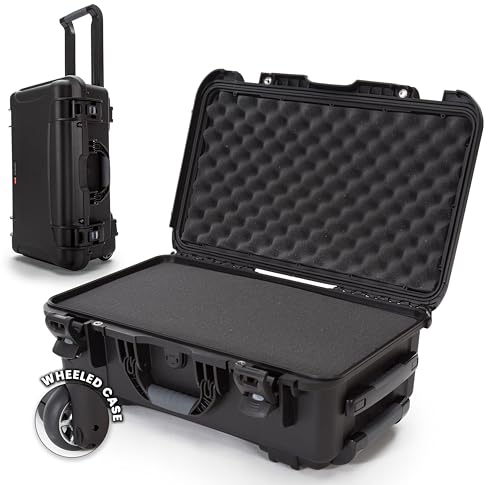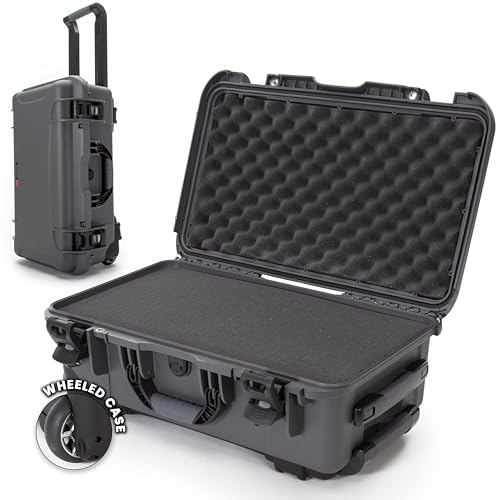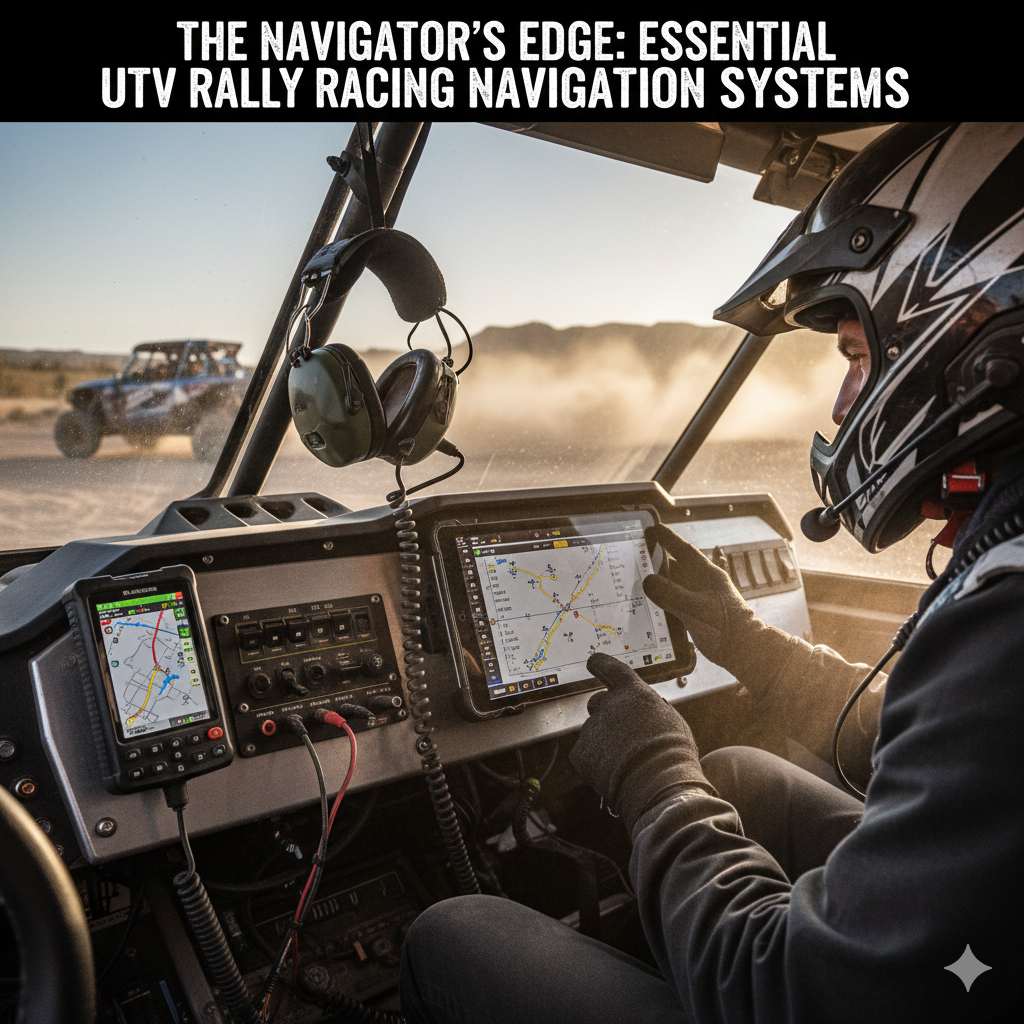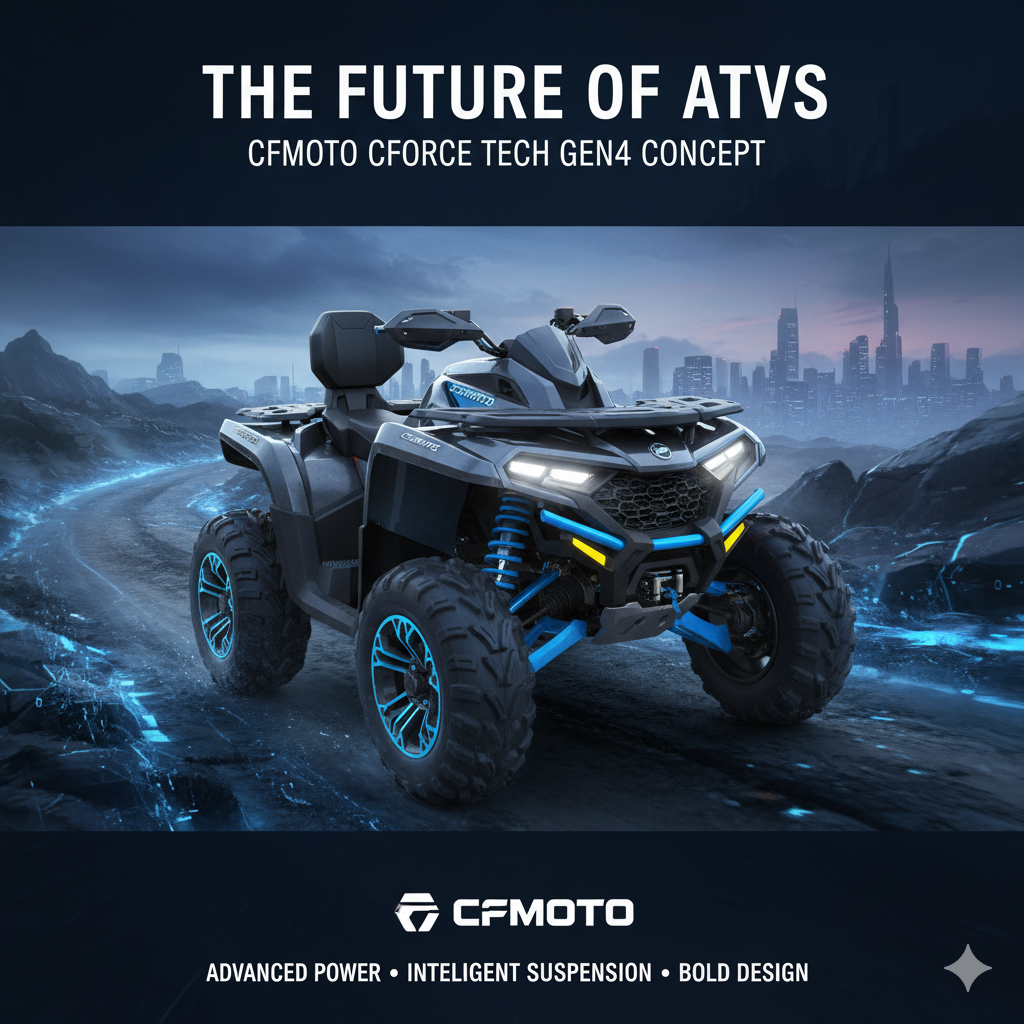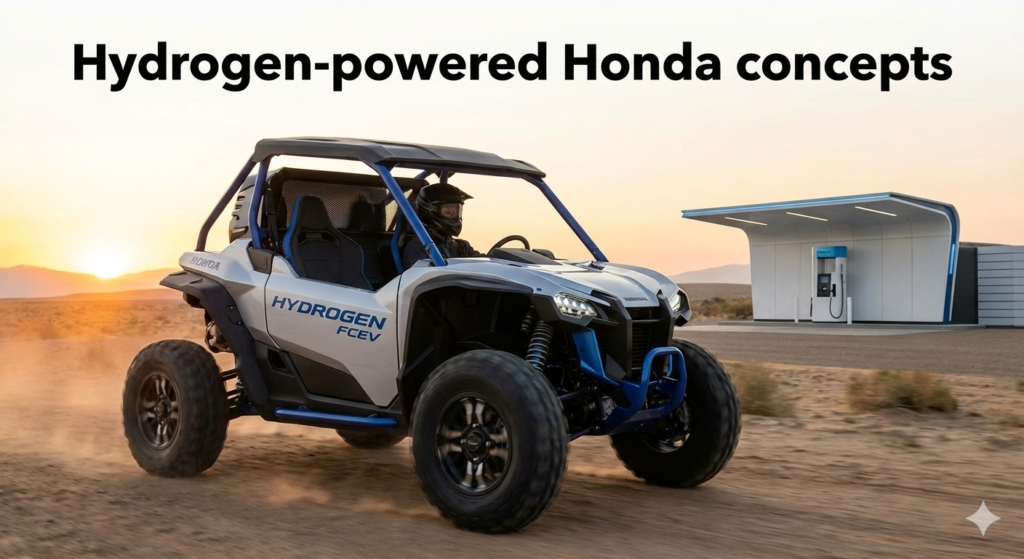Defining the Next Generation of Off-Road Situational Awareness
The UTV Environment: Unique Challenges for Display Technology
The operational environment of Utility Task Vehicles (UTVs), Side-by-Sides (SxS), and overland vehicles presents display technology challenges fundamentally different from those encountered in standard passenger cars.
These vehicles operate in conditions characterized by high vibration, extreme angles of inclination, unpredictable terrain, and frequent remote operation.
Traditional cockpit displays, which require the driver to look down and away from the trail, violate core safety principles in these high-risk environments.
This momentary diversion of visual focus, known to increase collision risk, is amplified when driving technical terrain.
The urgency for enhanced visual input has already spurred commercial aftermarket responses.
For example, the TrailVue system offers enhanced visibility via high-resolution front and rear cameras, providing 360-degree awareness.
While such systems are not true Augmented Reality Heads-Up Displays (AR-HUDs),
they establish the critical hardware foundation—robust displays, comprehensive camera systems,
and integration with vehicle interfaces like Apple CarPlay or Android Auto—necessary for advanced AR software overlays.
This commercial readiness for integrated visual input demonstrates an existing market demand for better situational awareness technology.
The inherent problem of distraction remains central to improving safety.
Global analysis indicates that human error contributes to approximately 94% of traffic crashes.
This human error often stems from the necessity of shifting the driver’s attention between internal vehicle information and the external road environment.
For UTV drivers, this distraction is significantly amplified when monitoring crucial vehicle telemetry,
such as pitch and roll angles, displayed on a dashboard screen.
The solution requires integrating this critical data directly into the driver’s field of view.
App-Based AR and Geo-Spatial Integration: The Current State of Trail Overlays
A necessary prerequisite for successful UTV AR technology is the seamless integration of authoritative geo-spatial data.
Industry leaders like onX Offroad have established foundational platforms, providing critical information such as 3D trail maps,
private property boundaries, cell coverage layers, and even active wildfire tracking.
The ability of onX to sync with Android Auto and offer features like offline maps and detailed trail filtering by vehicle type (4×4, SxS, ATV)
confirms that this geospatial data layer is essential for any functional navigational AR display.
Future AR-HUD systems cannot effectively guide drivers without deep, seamless integration with this existing infrastructure,
moving beyond simple GPS arrows to deliver complex, contextual trail information.
Beyond navigation, location-based content AR applications are already enriching travel experiences.
Apps such as AR Trails illustrate the potential for overlaying informative content onto the physical world,
turning a basic trip into an interactive adventure by projecting historical facts or Points of Interest (POI) onto the environment.
The development of the AR Trails Creator’s Studio,
which allows users to easily create and even monetize their own augmented reality trails, suggests a significant future opportunity.
UTV manufacturers could capitalize on this trend by fostering community-driven AR trail guides,
allowing users to crowdsource information such as hazard warnings, scenic view markers,
or real-time trail condition updates, thereby adding value that extends far beyond basic vehicle functionality.
Critical Telemetry Requirements: Pitch, Roll, and Rollover Prevention
For safe, high-performance off-roading, constant and immediate monitoring of the vehicle’s pitch (front-back tilt) and roll (side-to-side tilt) is absolutely vital.
Existing mobile applications already provide highly accurate inclinometers that offer customizable tilt warnings to help prevent dangerous rollovers.
The central problem is that current solutions require the driver to divert their attention to a separate screen.
In technical terrain, where a fraction of a second can determine vehicle stability, this latency is unacceptable.
Therefore, the AR imperative is to present this critical safety data directly in the driver’s line of sight, blended seamlessly with the real terrain.
This approach ensures that the vehicle’s state is perceived instantly and relative to the immediate landscape,
rather than requiring the driver to interpret abstract numerical data displayed elsewhere.
Deployable AR Hardware Modalities for the Rugged Powersports Sector
The deployment of AR technology in the UTV market is constrained by the extreme operating environment,
forcing a strategic choice between two primary hardware modalities: integrated AR-HUDs and head-worn smart glasses.
Augmented Reality Heads-Up Displays (AR-HUDs): The High-Integration Solution
AR-HUDs represent the pinnacle of vehicular display technology, serving as advanced driver assistance systems (ADAS) by projecting crucial information onto the windshield.
This method eliminates the need for the driver to divert attention,
significantly improving driving safety and drastically increasing the system’s capacity for information interaction.
Major automotive manufacturers are embracing this shift; for example,
Cadillac plans to debut an AR-HUD in its Lyriq during the 2024 model year.
Technological progress in HUDs relies heavily on specialized optical architectures.
These systems utilize Picture Generation Units (PGUs) and specific optical designs,
defined by critical parameters such as Field of View (FOV), Virtual Image Distance (VID), and Eyebox size.
For UTVs, the requirement for a wide FOV and a large Eyebox (the volume in which the display is visible) is exponentially more challenging, given the constant, jarring motion and rapid angular changes inherent to off-roading.
Current technologies, such as off-axis four-mirror systems, offer FOVs around 6^{\circ} \times 3^{\circ} at a 5-meter VID, but often necessitate a physically large unit, making integration difficult in a compact UTV cockpit.
Despite these hurdles, the potential for AR-HUDs as a safety co-pilot is immense.
By utilizing data from vehicle sensors—including GPS, cameras, and radar—the system projects intuitive visual cues.
Features can include hazard identification, such such as instantly drawing a bright, highlighted box around pedestrians or large, obscured obstacles, alerting the driver before natural observation might.
For UTVs, this functionality translates directly into faster identification of obscured washouts, loose rocks, or wildlife, offering a critical advantage over human visual processing alone.
Head-Worn Displays (Smart Glasses): Portability and Flexibility
An alternative deployment method, particularly well-suited for open-air UTVs lacking a traditional windshield, is the use of specialized head-worn displays or smart glasses.
Enterprise-grade devices like the Vuzix M4000 are ruggedized, waterproofed, and feature powerful processing units, such as 8-core AR processors, making them highly durable and weather-resistant.
This modality has already gained traction in industrial and logistical sectors.
Amazon’s development of “Amelia” AR glasses for delivery drivers, focusing on route assistance and efficiency,
provides a viable operational model for UTV fleet management, guided tours, or even off-road rescue operations.
These professional applications prioritize robust functionality and low bulk over sleek consumer aesthetics.
Smart glasses also offer utility for co-pilots or spotters, allowing them to overlay virtual guidance points (e.g., precise positioning for rock crawling) directly into the driver’s view, enhancing team communication and safety.
Hybrid System Architectures: Integrating Disparate Data Streams
A comprehensive AR strategy for the powersports sector will ultimately rely on hybrid architectures.
This necessitates the seamless integration of all disparate data streams.
The industry is striving toward a full-windshield 3D-HUD that eliminates current technical bottlenecks.
This unified system would weave together real-time data from the UTV’s CAN bus (vehicle telemetry, diagnostics), sophisticated geo-spatial data (from providers like onX), and real-time hazard detection input (from cameras and radar).
This technology trade-off between the high integration of AR-HUDs and the rugged portability of Head-Mounted Displays (HMDs) suggests the UTV market will adopt a tiered structure.
High-end, integrated OEM models will feature full AR-HUDs, while the entry-level and aftermarket sectors will gravitate toward ruggedized smart glasses.
The fundamental commonality, regardless of hardware, is that the primary value proposition of AR in UTVs shifts from mere navigation to immediate, visual hazard mitigation and real-time vehicle status awareness.
Implementing AR effectively means translating complex vehicle physics, such as pitch and roll data ,
into instantaneous visual safety cues, for instance,
by overlaying a virtual alarm boundary directly onto the terrain,
illustrating the tipping point relative to the surrounding environment.
Strategic AR Applications: Safety, Performance, and Enhanced Trail Experience
The core utility of Augmented Reality in UTVs resides in its ability to enhance safety and driving performance by providing immediate, contextually relevant information.
Advanced Hazard and Obstacle Detection
One of the most critical safety benefits of AR is the instantaneous detection and highlighting of hazards.
Research has demonstrated that dynamically linked warning icons,
often referred to as BW icons, significantly enhance a driver’s pedestrian risk awareness and optimize visual attention allocation when compared to static, fixed-position displays.
For UTV operation, where hazards are dynamic and often obscured (dust, moving debris, or wildlife), a static warning on a dashboard is insufficient.
The AR display must anchor warning cues directly onto the physical object in the driver’s sightline, adjusting position dynamically as the vehicle moves.
This spatial anchoring is vital for minimizing distraction and maximizing reaction time.
Furthermore, AR can be used for sophisticated path planning and roadway guidance by projecting virtual boundaries or lines onto the ground,
indicating the safest path of travel, preventing lane departure, or illustrating a pre-planned route.
Real-Time Telemetry and Vehicle Health Overlay
The most compelling safety function involves overlaying pitch and roll data directly onto the observed terrain.
This allows the driver to perceive the vehicle’s angle of attack instantly and spatially relative to the landscape,
eliminating the cognitive latency involved in translating numerical data from a separate screen.
This capability effectively allows the driver to perceive their vehicle’s maximum safe limits as a virtual boundary within the environment.
Beyond inclination, AR can project core vehicle diagnostics—such as engine temperature warnings, low fuel levels, or 4×4 engagement status—into the HUD.
This seamless delivery prevents the driver from diverting their gaze during critical maneuvers when total focus on the terrain is required.
Enhanced Navigation and Wayfinding in Remote Areas
Augmented Reality moves navigation far beyond static 2D maps.
By projecting waypoints, points of interest, and digital signposts (which can share historical or environmental facts) onto the physical environment, AR creates an interactive wayfinding experience.
This is particularly advantageous in extensive, unmarked trail systems where conventional maps may lack detail.
A key operational requirement for UTV AR systems is seamless offline functionality, as remote areas often lack cell service.
The system must support pre-downloading of maps and geo-tagged AR assets.
Existing commercial solutions, such as TrailVue, already underscore the reliance on high-capacity TF card storage for reliable local data access.
Community and Content Creation Integration
The experiential side of UTV travel can be significantly augmented through AR.
Allowing users to geo-tag photos and interactive elements along a route facilitates social engagement and crowdsourced trail information,
offering opportunities for adventure challenges and rewards.
This leverages the collaborative nature of the UTV community.
Furthermore, the commercial model demonstrated by the AR Trails Creator’s Studio,
which supports the sale of curated AR trails , opens up new revenue streams for professional guides, tourism operators, and dedicated trail enthusiasts.
The critical advantage of UTV AR rests in its ability to translate complex, real-time vehicle physics (like pitch and roll) into immediate, spatially accurate visual cues.
If the system fails to do this, the primary safety advantage is lost.
The system must reduce ambiguity, especially in low-visibility or confusing terrain, by acting as a persistent layer of verification for driver perception.
The following table summarizes the comparative advantage of AR overlays versus traditional displays for off-road safety:
AR Safety Functionality Comparison: Traditional Display vs. AR Overlay
| Safety Function | Traditional Display Method | Augmented Reality (AR) Overlay | Primary Benefit in UTV Context |
|---|---|---|---|
| Pitch/Roll Angle | Separate inclinometer screen (requires eyes-down view) | Dynamic virtual bubble level anchored to the terrain | Instantaneous, spatially relative assessment of rollover risk. |
| Hazard Warning | Dashboard light/audible chime | Bright, dynamically highlighted box around the physical obstacle (e.g., pedestrian, large rock) | Drastically reduced reaction time; increased risk awareness. |
| Navigation | 2D map screen (mental translation required) | Projected route lines anchored onto the physical path ahead | Reduced cognitive load (hybrid attention); clear guidance in unmarked territory. |
Technical and Human Factors Bottlenecks in the Powersports AR Ecosystem
The path to mass adoption of AR in the UTV market is impeded by significant engineering challenges and complex human factors issues that exceed those found in standard automotive applications.
Engineering and Optical Challenges in Dynamic Environments
UTV operation subjects equipment to constant, extreme vibration and shock.
This challenges the stabilization and calibration of the internal Picture Generation Units (PGUs),
demanding optical components capable of maintaining the seamless integration of virtual and real images.
Precision is non-negotiable; even slight misalignment due to vibration renders the AR cues dangerous or highly distracting.
The hardware must incorporate extreme durability testing far exceeding standard automotive specifications, specifically targeting vibration dampening for the optical components.
Environmental factors are equally challenging.
Off-road settings expose displays to high-contrast sunlight and persistent glare.
The AR display must achieve ultra-high brightness and contrast sufficient to overcome sun glare without creating visual washouts.
Virtual testing and validation must specifically cover complex environmental “edge cases,” such as sun glare confusing sensors.
Despite advancements, current AR-HUDs still struggle to achieve the true integration of virtual information and real-world conditions across a multi-plane, full-color display.
This technical hurdle remains the single largest impediment to seamless mass adoption.
Physiological and Psychological Human Factors (HFE)
The human factors challenges—specifically motion sickness and cognitive load—may pose greater obstacles to UTV AR adoption than the technical hardware limitations.
Augmented Reality places unprecedented demands on the driver’s attention, requiring “hybrid attention,” which is the simultaneous monitoring of virtual and physical stimuli.
This increases cognitive workload and introduces the risk of attentional hijacking,
where a notification or virtual element causes the driver to lose focus on an immediate real-world threat.
Design must therefore employ strict minimalism, prioritizing only mission-critical data and actively suppressing tertiary information when the vehicle is operating under high-demand conditions (e.g., high speed or extreme inclination).
Motion sickness (kinetosis) is a substantial risk. While drivers rarely get motion sick, passengers frequently do (up to 46% susceptibility).
This condition is caused by the sensory conflict between visual input and the vestibular system (inner ear balance).
Off-road driving naturally induces high sensory conflict due to aggressive, unpredictable motion.
Since rural driving scenarios already induce higher simulator sickness (SS) symptoms than city traffic , the integration of an AR display that lags, wobbles, or displays aggressive virtual motion could easily push the driver past the threshold for kinetosis.
Given the established risk of distraction , UTV AR implementation must be justified primarily by verifiable safety benefits.
Regulatory bodies, such as the National Highway Traffic Safety Administration (NHTSA),
will eventually need to update distracted driving guidance to explicitly address issues unique to vehicular AR HUDs.
UTV manufacturers must proactively incorporate research-backed design principles,
such as dynamic tracking warnings , to address safety and cognitive load before regulators are compelled to mandate restrictions.
Key Technical and Human Factors Constraints for UTV AR Deployment
| Constraint Category | Specific Challenge for UTVs | Supporting Data/Risk Level | Mitigation Strategy |
|---|---|---|---|
| Technical/Optical | High Vibration & G-Force Exposure | Disrupts PGU stability; extreme risk of image misalignment | Advanced optical stabilization; full-windshield 3D-HUD architecture. |
| Technical/Environment | Severe Sunlight and Glare | High risk of display washout; sensor confusion | Ultra-high brightness projection; virtual testing for sun glare edge cases. |
| Human Factors | Motion Sickness (Kinetosis) | High sensory mismatch due to rapid, erratic off-road motion | Optimized icon dynamics (BW icons) ; minimizing display lag and virtual motion. |
| Human Factors | Cognitive Load (Hybrid Attention) | Attentional hijacking risk during high-speed/technical driving | Context-aware data display; strictly minimalist information overlays. |
Long-Term Health and Legal Implications
The use of AR also introduces long-term health concerns.
Prolonged exposure to head-mounted displays, in particular, can lead to visual fatigue and dry eyes.
More concerning is the physical risk associated with drivers becoming engrossed in augmented content, leading to a loss of awareness of real-world obstacles and potential accidents.
Furthermore, the overlay of digital content onto the physical environment raises complex legal issues concerning intellectual property rights,
data ownership, content regulation, and the determination of legal jurisdiction when AR experiences cross physical boundaries.
Market Outlook and Strategic Roadmap for UTV AR
The adoption of Augmented Reality in the UTV sector will likely follow a tiered, evolutionary path, dictated by hardware cost, integration feasibility, and the imperative of safety validation.
The Competitive Landscape: OEM vs. Aftermarket
Original Equipment Manufacturers (OEMs) of high-end UTVs are poised to introduce integrated AR-HUDs as premium features.
This strategy leverages their access to proprietary vehicle sensor data and allows for deep integration of essential telemetry,
such as pitch and roll, into the vehicle design (mirroring the approach seen in the automotive sector ).
In contrast, aftermarket companies will focus on more cost-effective and versatile solutions.
This includes offering ruggedized smart glasses (HMDs) and enhancing sophisticated camera/display integration (like TrailVue ).
These aftermarket solutions depend heavily on utilizing open platforms (Android Auto/CarPlay) to integrate leading third-party applications like onX Offroad ,
providing a functional, immediate solution that addresses the core need for eyes-up data access without the cost of full OEM integration.
Strategic Recommendations for Product Development
The strategic roadmap for UTV AR must be centered on safety validation and human factors optimization:
- Prioritize Minimalist Safety AR: Initial product development must focus strictly on augmenting essential safety cues, such as rollover prevention and dynamic hazard identification. Entertainment and points of interest features must be secondary and actively suppressed during high-demand driving contexts to mitigate cognitive load.
- Build Open Data Ecosystems: AR developers must ensure immediate compatibility with industry-standard geospatial data providers (like onX Offroad). Creating proprietary, closed trail data layers is inefficient and will limit user adoption.
- Invest in HFE Research: Dedicated research and development funding should be directed toward addressing motion sickness and cognitive load specifically within the context of high-vibration, off-road driving. This research is necessary to refine display characteristics and minimize the visual-vestibular conflict.
- Target Enterprise/Fleet Use First: Deploying rugged AR smart glasses, similar to Amazon’s ‘Amelia’ model , for UTV fleet operations, professional guide services, or rescue vehicles allows for real-world stress-testing and refinement of stability and guidance features under controlled conditions before consumer release.
Conclusions and Future Research Directions
The analysis indicates that AR technology possesses the capacity to revolutionize UTV safety and performance by solving the fundamental problem of driver distraction and cognitive latency.
The success of UTV AR is proportional to its effectiveness in translating complex vehicle physics into immediate, spatially accurate visual cues.
Future research must prioritize breakthroughs in two key areas.
First, continued development is required to break the technical bottlenecks associated with multi-plane display and overall system volume,
working toward a true full-windshield 3D-HUD that offers seamless virtual-real integration.
Second, significant effort must be placed on developing methods to measure individual sickness susceptibility (visual and car sickness).
This will allow for the personalization of the AR experience, tailoring display characteristics (such as refresh rate,
cue location, and data density) to minimize cognitive strain and reduce the risk of kinetosis for individual drivers.
By proactively addressing these technical and human factors challenges, the UTV industry can establish effective,
research-backed safety standards, paving the way for the mass adoption of augmented reality.

